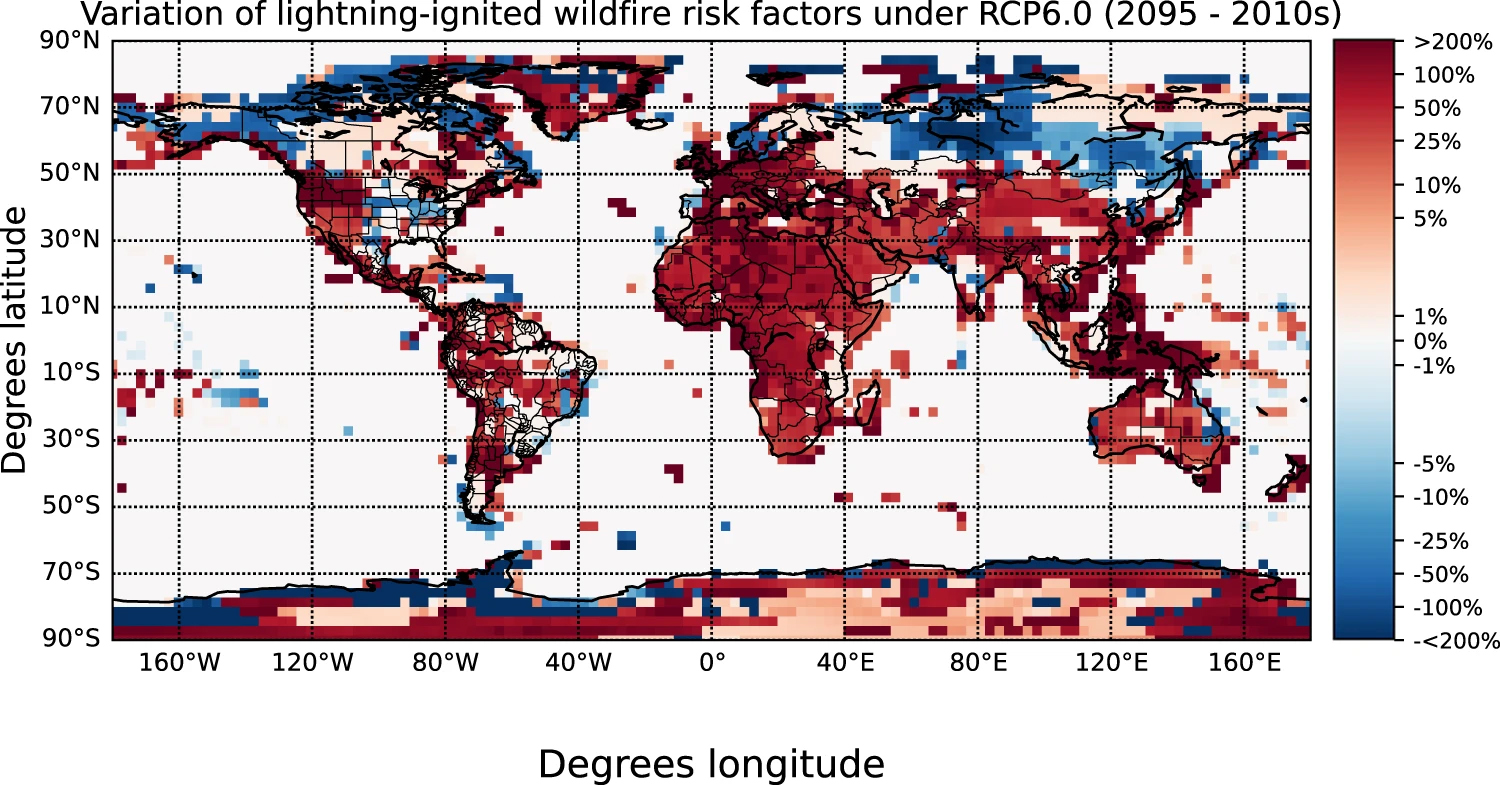Climate change will increase forest fires caused by thunderstorm lightning strikes
The Institute of Astrophysics of Andalusia (IAA-CSIC) is leading a study that concludes that lightning could increase by 40% before the end of this century. The study points to a large increase in forest fires in the Mediterranean basin, as well as in the central and west coast of North America
Lightning is the main cause of natural fires in the world, which can spread rapidly depending on weather conditions and available fuel, releasing into the atmosphere considerable amounts of carbon, nitrogen oxides and other gases involved in the climate crisis. Studies have suggested that the frequency and distribution of lightning strikes may change in the future, and a study led by the IAA-CSIC and published in Nature Communications shows an increase of more than 40% in total lightning strikes, which in turn increases the risk of forest fires.
"This work aims to explore lightning variation to predict future wildfire patterns by combining lightning measurements provided by the GLM instrument on board the GOES-R satellite with the wildfire database provided by the US Department of Agriculture. Our research indicates that lightning with continuous currents has a higher probability of causing forest fires compared to those without continuous currents", says Francisco J. Pérez-Invernón, a researcher at the IAA-CSIC with a postdoctoral fellowship from "la Caixa" Foundation who is leading the study.
Direct current lightning, which constitutes around 10% of all lightning strikes, is a specific type of lightning that has a very long discharge duration (tens or hundreds of milliseconds), which supplies more energy to the vegetation and increases the probability of fire.
"We simulated the 2090s under the Representative Concentration Pathway 6.0 (RCP6.0) scenario, one of the emissions stabilisation scenarios defined in the fifth report of the Intergovernmental Panel on Climate Change (IPCC). Our results showed a 43% and 41% increase in global total and long-lived lightning, respectively. In particular, we observed a 47% increase in long-lived lightning strikes over land, which could increase the risk of lightning-induced forest fires in the future", says Francisco J. Pérez-Invernón (IAA-CSIC / Fundación La Caixa).

The results predict a decrease in the risk of lightning-induced forest fires in polar regions in the 2090s, except in some small areas of Scandinavia, Alaska and Siberia, where the risk could be high due to an increase in long-current lightning. On the other hand, they point to an increased risk of lightning-induced wildfires in Southeast Asia, South America, Africa and Australia, and a marked change in regional patterns in North America and Europe. In particular, they estimate a large increase in lightning-induced wildfires along the Mediterranean basin and on the west and central coasts of North America in the 2090s.
"In addition, we have seen that increasing temperatures and the likelihood of dry storms in the Mediterranean basin will increase the likelihood of lightning fires. Dry storms are those in which the high temperature at near-ground levels favours raindrops to dry out before reaching the surface, thus increasing the probability of a lightning strike causing a fire and of the fire spreading", adds the researcher.
This study has not been able to provide conclusive results for other areas of the peninsula, a gap that will be filled by a geostationary satellite recently launched by Europe. Called Meteosat Third Generation, it incorporates an optical instrument capable of continuously observing, for the first time in Europe and Africa, the occurrence of lightning and its possible continuous discharge. "The data provided by this instrument and the use of regional models will undoubtedly help us to better predict the future variation in the risk of fire caused by lightning in the Iberian Peninsula", concludes Pérez-Invernón (IAA-CSIC / La Caixa).
F. J. Pérez-Invernón et al. "Variations of lightning-ignited wildfire patterns under climate change". Nature Communications, Feb. 2023. https://www.nature.com/articles/s41467-023-36500-5
Instituto de Astrofísica de Andalucía (IAA-CSIC)
Unidad de Divulgación y Comunicación
Silbia López de Lacalle - sll[arroba]iaa.es - 958230676
https://www.iaa.csic.es
https://divulgacion.iaa.csic.es

